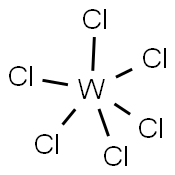Tungsten
- CAS No.
- 7440-33-7
- Chemical Name:
- Tungsten
- Synonyms
- W;Tungsten1;TUNGSTEN METAL;Tungsten solution;W HC 40;Tunsten;325mesh;W 005145;W 007930;W 008710
- CBNumber:
- CB7854185
- Molecular Formula:
- W
Lewis structure

- Molecular Weight:
- 183.84
- MDL Number:
- MFCD00011461
- MOL File:
- 7440-33-7.mol
- MSDS File:
- SDS
| Melting point | 3410 °C (lit.) |
|---|---|
| Boiling point | 5660 °C (lit.) |
| Density | 19.3 g/mL at 25 °C (lit.) |
| vapor pressure | 0Pa at 3000℃ |
| Flash point | -23 °C |
| storage temp. | no restrictions. |
| form | wire |
| color | Silver-gray |
| Specific Gravity | 19.3 |
| Resistivity | 4.9 μΩ-cm, 20°C |
| Water Solubility | insoluble |
| Merck | 13,9884 |
| Exposure limits |
ACGIH: TWA 2 ppm; STEL 4 ppm OSHA: TWA 2 ppm(5 mg/m3) NIOSH: IDLH 25 ppm; TWA 2 ppm(5 mg/m3); STEL 4 ppm(10 mg/m3) |
| Stability | Stable. Dust is flammable, though not likely to present a hazard if normal good practice is used. |
| CAS DataBase Reference | 7440-33-7(CAS DataBase Reference) |
| EWG's Food Scores | 1 |
| FDA UNII | V9306CXO6G |
| NIST Chemistry Reference | Tungsten(7440-33-7) |
| EPA Substance Registry System | Tungsten (7440-33-7) |
| Modulus of Elasticity | 400 GPa |
|---|---|
| Poissons Ratio | 0.28 |
| Shear Modulus | 156 GPa, Calculated |
| Hardness, Vickers | 480, Drawn and annealed. |
| Hardness, Brinell | 444, Converted from Vickers for 3000 kg load/10 mm ball Brinell test. Drawn and annealed. |
| Hardness, Rockwell A | 74, Converted from Vickers. Drawn and annealed. |
| Hardness, Rockwell C | 47, Converted from Vickers. Drawn and annealed. |
| Hardness, Knoop | 505, Estimated from Vickers. |
SAFETY
Risk and Safety Statements
| Symbol(GHS) |  GHS02 |
|||||||||
|---|---|---|---|---|---|---|---|---|---|---|
| Signal word | Danger | |||||||||
| Hazard statements | H228-H252 | |||||||||
| Precautionary statements | P210-P235-P240-P241-P280-P370+P378 | |||||||||
| Hazard Codes | F,Xi,N,Xn | |||||||||
| Risk Statements | 11-36/38-67-65-62-51/53-48/20-38 | |||||||||
| Safety Statements | 6-26-36-62-61-36/37-16 | |||||||||
| RIDADR | UN 3089 4.1/PG 2 | |||||||||
| WGK Germany | - | |||||||||
| RTECS | YO7175000 | |||||||||
| TSCA | Yes | |||||||||
| HazardClass | 4.1 | |||||||||
| PackingGroup | III | |||||||||
| HS Code | 81011000 | |||||||||
| NFPA 704 |
|
Tungsten price More Price(573)
| Manufacturer | Product number | Product description | CAS number | Packaging | Price | Updated | Buy |
|---|---|---|---|---|---|---|---|
| Sigma-Aldrich | GF98813469 | Tungsten wire reel, 5m, diameter 0.01mm, gold plated, 99.95% | 7440-33-7 | 1EA | $333 | 2024-03-01 | Buy |
| Sigma-Aldrich | GF98514344 | Tungsten wire reel, 10m, diameter 0.018mm, hard, clean, 99.95% | 7440-33-7 | 1EA | $222 | 2024-03-01 | Buy |
| Sigma-Aldrich | GF97979494 | Tungsten foil, 0.2m coil, thickness 0.076mm, coil width 2mm, as rolled, 99.95% | 7440-33-7 | 1EA | $195 | 2024-03-01 | Buy |
| Sigma-Aldrich | GF97710734 | Tungsten foil, 1m coil, thickness 0.10mm, coil width .9mm, as rolled, 99.95% | 7440-33-7 | 1EA | $260 | 2024-03-01 | Buy |
| Sigma-Aldrich | GF96225486 | Tungsten foil, light tested, 100x100mm, thickness 0.05mm, as rolled, 99.95% | 7440-33-7 | 1EA | $316 | 2024-03-01 | Buy |
Tungsten Chemical Properties,Uses,Production
History and Occurrence
The discovery of tungsten occurred in the 1780’s. Peter Woulfe, in 1779, while examining the mineral now known as wolframite, established that it contained a new substance. Around the same time, Swedish chemist Carl Wilhelm Scheele was investigating another mineral, scheelite. This mineral was known at that time as tungsen, which in Swedish meant heavy stone. Scheele, in 1781, determined that tungsen contained lime and a new acid similar to molybdic acid. This new acid was tungstic acid. Scheele and Bergman predicted that reduction of this acid could produce a new metal. Two years later in 1783, J. J. de Elhuyar and his brother F. deElhuyar of Spain first prepared metallic tungsten from wolframite. They derived an acid from wolframite which was similar to acid obtained by Scheele from tungsten (scheelite), and succeeded in producing a new metal by reduction of this acid with charcoal. Also, they determined that the mineral wolframite contained iron and manganese. The metal took over the old name of its mineral tungsten. Also the metal is known as wolfram, derived from the name of its other mineral, wolframite. The word wolfram originated from the wolf-like nature of the mineral that it devoured tin during the tin smelting operation causing low recoveries. The element was given the symbol W for its old name wolfram.
Tungsten is widely distributed in nature, occurring in several minerals. It is found in scheelite, CaWO4; wolframite, (Fe,Mn)WO4; huebnerite, MnWO4; ferberite, FeWO4; tungstite, H2WO4; and cuprotungstite, CuWO4. Its abundance in the earth’s crust is estimated to be 1.25 mg/kg and average concentration in seawater is about 0.1 μg/L.
Chemical Properties
Tungsten is a steel-gray to tin-white metal. It is a heavy metal. It is a very hard metal that is stable in dry air at ordinary temperatures. Although very difficult to work with, tungsten can be cut with a hacksaw, forged, or spun. Commercially, tungsten is obtained via the reduction of tungsten oxide with hydrogen or carbon. Due to its hardness, tungsten has the highest boiling point and highest tensile strength of all metals. Although the metal shows resistance to corrosion, it can oxidize in air with an increase in temperature (Robert and Golden, 1980; Gbaruko and Igwe, 2007).
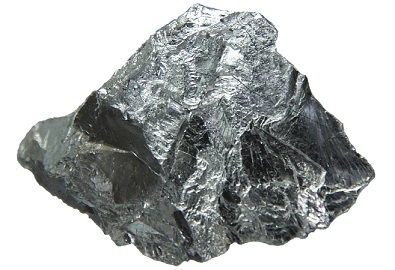
Tungsten is a very hard metal with similar properties and functions to molybdenum and chromium. Unlike molybdenum, tungsten is not an essential trace metal. However, tungsten is a competitive inhibitor of molybdenum in bacteria, plants, and animals (Hainline and Rajagopalan, 1983; Smith, 1991).
Uses
Industrially tungsten is a very important metal having wide applications. This is due to many outstanding physical properties. Among all the metals, tungsten has the highest melting point and the lowest vapor pressure. Also at high temperatures it has the highest tensile strength. The metal has an excellent resistance to corrosion and attack by mineral acids. Also it has a thermal expansion comparable to that of borosilicate glass.
Tungsten is extensively used in alloy steel to impart high strength and hardness to steel. Heavy metal alloys with nickel, copper and iron, produced by powder metallurgy, can be made machineable and moderately ductile for applications as high-density materials. Tungsten carbides are extremely hard and are excellent cutting materials. They are used extensivly in the tool and die industry for drilling and cutting tools, sand blasting nozzels, armor-piercing bullets, and studs to increase traction of tires.
Among the nonferrous tungsten alloys, its alloys with copper and silver are used as electrical contacts and switches and with molybdenum in aerospace components.
Unalloyed tungsten has several major applications. An important use is in the electric lamp filaments for light bulbs. Also, it is used as electrodes in arcwelding, in heating elements for high-temperature furnaces, in electron and television tubes, in glass-tometal seals, and in solar energy devices.
Physical Properties
Grayish-white metal; body-centered cubic crystalline structure; density 19.3 g/cm3; melts at 3,422°C; vaporizes at 5,555°C; vapor pressure 1 torr at 3,990°C; electrical resistivity 5.5 microhm-cm at 20°C; modulus of elasticity about 50 to 57 × 106 psi (single crystal); Poisson’s ratio 0.17; magnetic susceptibilty +59 × 10–6; thermal neutron absorption cross section 19.2 + 1.0 barns (2,200m/sec); velocity of sound, about 13,000 ft/sec; insoluble in water; practically insoluble in most acids and alkalies; dissolves slowly in hot concentrated nitric acid; dissolves in saturated aqueous solution of sodium chlorate and basic solution of potassium ferricyanide; also solubilized by fusion with sodium hydroxide or sodium carbonate in the presence of potassium nitrate followed by treatment with water.
Production
Tungsten is recovered mostly from mineral scheelite and wolframite. The recovery process depends on the mineral, the cost, and the end use; i.e., the commercial products to be made. Typical industrial processes have been developed to convert tungsten ores to tungsten metal and alloy products, tungsten steel, non-ferrous alloys, cast and cemented tungsten carbides, and tungsten compounds. A few processes are mentioned briefly below.
The first step in recovery is opening the ore. If the ore is scheelite, CaWO4, it is digested with hydrochloric acid:
CaWO4 + 2HCl → H2WO4 + CaCl2
Tungstic acid, H2WO4 precipitates out. The precipitate is washed and dissolved in sodium or ammonium hydroxide solution during heating:
H2WO4 + 2NaOH → Na2WO4 + 2H2O
Sodium tungstate is crystallized, separated from any impurities in the solution, and digested again with hydrochloric acid to form tungstic acid in purified form. The pure acid is dried, ignited and reduced with carbon to form tungsten powder from which most non-ferrous alloys are made.
Reactions
Tungsten exhibits several oxidation states, +6 being most stable. Compounds of lower oxidation states show alkaline properties. They also are less stable than those produced in higher oxidation states. Tungsten exhibits remarkable stability to practically all substances at ambient temperature. The metal is not attacked by nonoxidizing mineral acid. Concentrated hydrochloric acid, dilute sulfric acid and hydrofluoric acid attack the metal very slightly even when heated to 100°C. Tungsten is stable to dilute or concentrated nitric acid under cold conditions. Cold acid passivates the surface forming a slight oxide film. Hot dilute nitric acid corrodes the metal, while hot concentrated acid slowly dissolves bulk metal but rapidly oxidizes metal in powder form. At room temperature, aqua regia oxidizes metal only on the surface forming tungsten trioxide. A hydrofluoric-nitric acid mixture rapidly oxidizes tungsten to its trioxide. Chromic acid-sulfuric acid mixture does not react with tungsten metal in ductile form at ambient temperatures.
Description
Tungsten was recognized as a distinct element in 1779 by Peter Woulfe, but not isolated until 1783, by Jose and Fausto d’Elhuyar. The average tungsten concentration in the earth’s crust is ~0.006%. Tungsten occurs naturally as tungstate, mainly in compounds such as wolframites and scheelites.
Chemical Properties
Tungsten is a hard, brittle, steel-gray to tinwhite metal or fine powder.
Physical properties
Extremely pure samples of tungsten are rather soft and can be cut easily with a simple saw.Pure tungsten can be drawn into fine wires (ductile). On the other hand, if there are even a fewimpurities in the sample, the metal becomes very hard and brittle. It is a very dense metal witha whitish-to-silvery-grayish color when freshly cut. It has the highest melting point of all metalsat 3,422°C, making it a useful metal where high temperatures are required. Incidentally,the transition metals on both sides of it in period 6 (73Ta and 75Re) have the second- and thirdhighestmelting points. Tungsten’s boiling point is also high at 5,927°C.
Isotopes
There are 36 isotopes of tungsten. Five are naturally stable and therefore contributeproportionally to tungsten’s existence on Earth, as follows: W-180 = 0.12%, W-182 = 26.50%, W-183 = 14.31%, W-184 = 30.64%, and W-186 = 28.43%. The other31 isotopes are man-made in nuclear reactors and particle accelerators and have halflivesranging from fractions of a second to many days.
Origin of Name
Tungsten was originally named “Wolfram” by German scientists, after the mineral in which it was found, Wolframite—thus, its symbol “W.” Later, Swedish scientists named it tung sten, which means “heavy stone,” but it retained its original symbol of “W.”
Occurrence
Tungsten is the 58th most abundant element found on Earth. It is never found in 100%pure form in nature. Its major ore is called wolframite or tungsten tetroxide, (Fe,Mn)WO4,which is a mixture of iron and manganese and tungsten oxide. During processing, the ore ispulverized and treated with strong alkalis resulting in tungsten trioxide (WO3), which is thenheated (reduced) with carbon to remove the oxygen. This results in a variety of bright colorchanges and ends up as a rather pure form of tungsten metal: 2WO3 + 3C → 2WO + 3CO2.Or, if hydrogen is used as the reducing agent, a more pure form of metal is produced: WO3+ 3H2 → W + 3H2O.
Tungsten ores (oxides) are found in Russia, China, South America, Thailand, and Canada.In the United States, the ores are found in Texas, New Mexico, Colorado, California, Arizona,and Nebraska.
Characteristics
Tungsten is considered part of the chromium triad of group six (VIB), which consists of24Cr, 42Mo, and 74W. These elements share many of the same physical and chemical attributes.Tungsten’s high melting point makes it unique insofar as it can be heated to the point thatit glows with a very bright white light without melting. This makes it ideal as a filamentfor incandescent electric light bulbs. Most metals melt long before they reach the point ofincandescence.
Chemically, tungsten is rather inert, but it will form compounds with several other elementsat high temperatures (e.g., the halogens, carbon, boron, silicon, nitrogen, and oxygen).Tungsten will corrode in seawater.
History
In 1779 Peter Woulfe examined the mineral now known as wolframite and concluded it must contain a new substance. Scheele, in 1781, found that a new acid could be made from tung sten (a name first applied about 1758 to a mineral now known as scheelite). Scheele and Berman suggested the possibility of obtaining a new metal by reducing this acid. The de Elhuyar brothers found an acid in wolframite in 1783 that was identical to the acid of tungsten (tungstic acid) of Scheele, and in that year they succeeded in obtaining the element by reduction of this acid with charcoal. Tungsten occurs in wolframite, (Fe, Mn)WO4; scheelite, CaWO4; huebnerite, MnWO4; and ferberite, FeWO4. Important deposits of tungsten occur in California, Colorado, Bolivia, Russia, and Portugal. China is reported to have about 75% of the world’s tungsten resources. Natural tungsten contains five stable isotopes. Thirty-two other unstable isotopes and isomers are recognized. The metal is obtained commercially by reducing tungsten oxide with hydrogen or carbon. Pure tungsten is a steel-gray to tin-white metal. Very pure tungsten can be cut with a hacksaw, and can be forged, spun, drawn, and extruded. The impure metal is brittle and can be worked only with difficulty. Tungsten has the highest melting point of all metals, and at temperatures over 1650°C has the highest tensile strength. The metal oxidizes in air and must be protected at elevated temperatures. It has excellent corrosion resistance and is attacked only slightly by most mineral acids. The thermal expansion is about the same as borosilicate glass, which makes the metal useful for glass-to-metal seals. Tungsten and its alloys are used extensively for filaments for electric lamps, electron and television tubes, and for metal evaporation work; for electrical contact points for automobile distributors; X-ray targets; windings and heating elements for electrical furnaces; and for numerous spacecraft and high-temperature applications. High-speed tool steels, Hastelloy?, Stellite?, and many other alloys contain tungsten. Tungsten carbide is of great importance to the metal-working, mining, and petroleum industries. Calcium and magnesium tungstates are widely used in fluorescent lighting; other salts of tungsten are used in the chemical and tanning industries. Tungsten disulfide is a dry, high-temperature lubricant, stable to 500°C. Tungsten bronzes and other tungsten compounds are used in paints. Zirconium tungstate has found recent applications (see under Zirconium). Tungsten powder (99.999%) costs about $2900/kg.
Uses
Ferrous and nonferrous alloys, filaments in incandescent lamps, heating elements, welding electrodes, manufacture of abrasives and tools, manufacture of textiles and ceramics.
Uses
Since its melting temperature is over 3,400°C, tungsten is one of the few metals that canglow white hot when heated without melting. This factor makes it the second most frequentlyused industrial metal (the first is iron). Tungsten is used in the filaments of common lightbulbs, as well as in TV tubes, cathode ray tubes, and computer monitors. Its ability to be“pulled” into thin wire makes it useful in the electronics industry. It is also used in solarenergy products and X-ray equipment. Its ability to withstand high temperatures makes itideal for rocket engines and electric-heater filaments of all kinds. Tungsten carbide is used as asubstitute for diamonds for drills and grinding equipment. This attribute is important in themanufacture of exceptionally hard, high-speed cutting tools.
Uses
Tungsten, also known as wolfram, occurs as wolframite (FeWO4). It can be found in the earth’s crust but not in its pure metal form. It combines with other chemicals and compounds within the rocky earth’s crust. It is a transitional hard metal with physicochemical properties and can also be manufactured commercially (Lassner and Schnubert, 1999; Gbaruko and Igwe, 2007; Stefaniak, 2010; Strigul et al., 2010).
Tungsten is most commonly used to increase the hardness of steel. It is available commercially in the form of powder, single crystal, and ultrapure granule grades. It is also used in the manufacturing of alloys, light filaments, and X-ray tubes. A recent use for tungsten is as a lead substitute during the manufacturing of ammunition and sporting good products. Another recent commercial use for tungsten is in the production of wedding bands. It is also used as a catalyst in chemical reactions (Lassner and Schnubert, 1999; Gbaruko and Igwe, 2007; Stefaniak, 2010; Strigul et al., 2010).
To increase hardness, toughness, elasticity, and tensile strength of steel; manufacture of alloys; manufacture of filaments for incandescent lamps and in electron tubes; in contact points for automotive, telegraph, radio and television apparatus; in phonograph needles. Tungsten carbides (W2C, WC) used in rock drills, metal-cutting tools, wire-drawing dies. WC used as catalyst instead of platinum: Bennett et al., Science 184, 563 (1974).
Definition
A transition metal occurring naturally in wolframite ((Fe,Mn)WO4) and scheelite (CaWO4). It was formerly called wolfram. It is used as the filaments in electric lamps and in various alloys. Symbol: W; m.p. 3410 ± 20°C; b.p. 5650°C; r.d. 19.3 (20°C); p.n. 74; r.a.m. 183.84.
Production Methods
Tungsten occurs principally in the minerals wolframite (Fe,Mn)WO4, scheelite (CaWO4), ferberite (FeWO4), and hubnerite (MnWO4). These ores are found in China, Russia, Canada, Austria, Africa, Bolivia, Columbia, and Portugal. Wolframite is the most important oreworldwide; scheelite is the principal domestic U.S. ore. Scheelite, when pure, contains 80.6% WO3, the most common impurity being MoO3. The percentages of FeO and MnO in wolframite vary considerably; hubnerite is the term applied to ore containing more than 20% MnO and ferberite and to ore containing more than 20% FeO. Intermediate samples are called wolframite.
Definition
tungsten: Symbol W. A white orgrey metallic transition element(formerly called wolfram); a.n. 74;r.a.m. 183.85; r.d. 19.3; m.p. 3410°C;b.p. 5660°C. It is found in a numberof ores, including the oxides wolframite,(Fe,Mn)WO4, and scheelite,CaWO4. The ore is heated with concentratedsodium hydroxide solutionto form a soluble tungstate. Theoxide WO3 is precipitated from thisby adding acid, and is reduced to themetal using hydrogen. It is used invarious alloys, especially high-speedsteels (for cutting tools) and in lampfilaments. Tungsten forms a protectiveoxide in air and can be oxidizedat high temperature. It does not dissolvein dilute acids. It forms compoundsin which the oxidation stateranges from +2 to +6. The metal wasfirst isolated by Juan d’Elhuyer andFausto d’Elhuyer (1755–1833) in1783.
Reactivity Profile
Tungsten is stable at room temperature. Very slowly attacked by nitric acid, sulfuric acid, and aqua regia. Dissolved by a mixture of hydrofluoric acid and nitric acid. No reaction with aqueous bases. Attacked rapidly by motlen alkaline melts such as Na2O2 or KNO3/NaOH. Vigorous reactions with bromine trifluoride and chlorine trifluoride. Becomes incandescent upon heating with lead oxide; becomes incandescent in cold fluorine and with iodine pentafluoride. Combustible in the form of finely divided powder and may ignite spontaneously.
Hazard
Tungsten dust, powder, and fine particles will explode, sometimes spontaneously, in air.The dust of many of tungsten’s compounds is toxic if inhaled or ingested.
Health Hazard
The soluble compounds of tungsten are distinctly more toxic than the insoluble forms.
Flammability and Explosibility
Flammable
Safety Profile
An inhalation hazard. Mildly toxic by an unspecified route. An experimental teratogen. Experimental reproductive effects. A skin and eye irritant. Flammable in the form of dust when exposed to flame. The powdered metal may ignite on contact with air or oxidants (e.g., bromine pentafluoride, bromine, chlorine trifluoride, potassium perchlorate, potassium dichromate, nitryl fluoride, fluorine, oxygen difluoride, iodine pentafluoride, hydrogen sulfide, sodlum peroxide, lead (IV)oxide). See also TUNGSTEN COMPOUNDS and POWDERED METALS.
Potential Exposure
Tungsten is used in ferrous and nonferrous alloys, and for filaments in incandescent lamps. It has been stated that the principal health hazards from tungsten and its compounds arise from inhalation of aerosols during mining and milling operations. The principal compounds of tungsten to which workers are exposed are ammonium paratungstate, oxides of tungsten (WO3, W2O5, WO2); metallic tungsten; and tungsten carbide. In the production and use of tungsten carbide tools for machining, exposure to the cobalt used as a binder or cementing substance may be the most important hazard to the health of the employees. Since the cemented tungsten carbide industry uses such other metals as tantalum, titanium, niobium, nickel, chromium, and vanadium in the manufacturing process, the occupational exposures are generally to mixed dust.
Carcinogenicity
Tungsten has been suspected to be involved in the occurrence of childhood leukemia, with the discovery of a cluster of diseases in Fallon, Nevada, associated with elevated levels of tungsten in urine and drinking water. The exact environmental source of exposure to tungsten was not clearly identi?ed and there is little evidence for an etiological role of tungsten in eliciting leukemia.
Environmental Fate
Tungsten in the environment largely exists as ions in compounds and primarily insoluble solids. The potential for particulate matter to spread is low as wet and dry deposition removes it from the atmosphere. If released to air, most tungsten compounds have low vapor pressures and are expected to exist solely in the particulate phase in the ambient atmosphere. Volatization is not expected to be an important fate process.
Shipping
UN3089 Metal powders, flammable, n.o.s., Hazard Class: 4.1; Labels: 4.1-Flammable solid. UN3189 Metal powder, self heating, n.o.s., Hazard Class: 4.2; Labels: 4.2-Spontaneously combustible material.
Purification Methods
Clean the solid with conc NaOH solution, rub it with very fine emery paper until its surface is bright, wash it with previously boiled and cooled conductivity water and dry it with filter paper. [Hein & Herzog in Handbook of Preparative Inorganic Chemistry (Ed. Brauer) Academic Press Vol II p 1417 1965.]
Toxicity evaluation
Reported inhalation effects are probably due to cobalt in exposures, a competitive inhibitor of molybdenum utilization.
Incompatibilities
Tungsten: The finely divided powder is combustible and may ignite spontaneously in air. Incompatible with bromine trifluoride; chlorine trifluoride; fluorine, iodine pentafluoride.
Waste Disposal
Recovery of tungsten from sintered metal carbides, scrap and spent catalysts has been described as an alternative to disposal.
Tungsten Preparation Products And Raw materials
Raw materials
1of2
Preparation Products
1of2
| Supplier | Tel | Country | ProdList | Advantage | |
|---|---|---|---|---|---|
| Hebei Jingbo New Material Technology Co., Ltd | +8619931165850 | hbjbtech@163.com | China | 1000 | 58 |
| Hebei Saisier Technology Co., LTD | +86-18400010335 +86-13102810335 | admin@hbsaisier.cn | China | 626 | 58 |
| Henan Tianfu Chemical Co.,Ltd. | +86-0371-55170693 +86-19937530512 | info@tianfuchem.com | China | 21695 | 55 |
| career henan chemical co | +86-0371-86658258 | sales@coreychem.com | China | 29914 | 58 |
| Hubei Jusheng Technology Co.,Ltd. | 18871490254 | linda@hubeijusheng.com | CHINA | 28180 | 58 |
| Hefei TNJ Chemical Industry Co.,Ltd. | 0551-65418671 | sales@tnjchem.com | China | 34572 | 58 |
| Hebei Henghe Import and Export Trading Co. LTD | +8618032935937 18032916000 | demi@hbtycoon.com | CHINA | 449 | 58 |
| Shaanxi Dideu Medichem Co. Ltd | +86-029-89586680 +86-18192503167 | 1026@dideu.com | China | 9409 | 58 |
| Zhuoer Chemical Co., Ltd | 02120970332; +8613524231522 | sales@zhuoerchem.com | China | 3015 | 58 |
| Henan Alfa Chemical Co., Ltd | +8618339805032 | alfa4@alfachem.cn | China | 12755 | 58 |
Related articles
- Tungsten Crystal
- The space lattice of Tungsten W belongs to the cubic system, and its body-centered cubic lattice has a lattice constant of a=0....
- Nov 21,2023
- Industrial Applications and Uses of Tungsten
- Industrially tungsten is a very important metal having wide applications. This is due to many outstanding physical properties.....
- Sep 29,2019
- Industrial Preparation of Tungsten
- Tungsten ores such as scheelite and wolframite are recovered from rich veins by underground mining techniques and, to a lesser....
- Sep 29,2019
View Lastest Price from Tungsten manufacturers
| Image | Update time | Product | Price | Min. Order | Purity | Supply Ability | Manufacturer | |
|---|---|---|---|---|---|---|---|---|
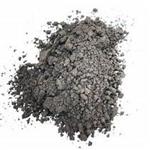 |
2024-04-12 | Tungsten
7440-33-7
|
US $6.00 / KG | 1KG | More than 99% | 2000KG/Month | Hebei Saisier Technology Co., LTD | |
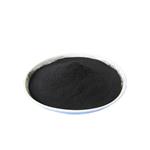 |
2023-12-25 | tungsten powder
7440-33-7
|
US $9.00 / kg | 1kg | 99.9% | 20000 | Hebei Jingbo New Material Technology Co., Ltd | |
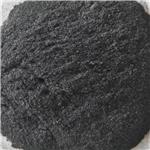 |
2023-12-25 | Tungsten
7440-33-7
|
US $0.00-0.00 / kg | 1kg | 99.9% | 1000000 | Hebei Jingbo New Material Technology Co., Ltd |
-

- Tungsten
7440-33-7
- US $6.00 / KG
- More than 99%
- Hebei Saisier Technology Co., LTD
-

- tungsten powder
7440-33-7
- US $9.00 / kg
- 99.9%
- Hebei Jingbo New Material Technology Co., Ltd
-

- Tungsten
7440-33-7
- US $0.00-0.00 / kg
- 99.9%
- Hebei Jingbo New Material Technology Co., Ltd
7440-33-7(Tungsten)Related Search:
1of4






